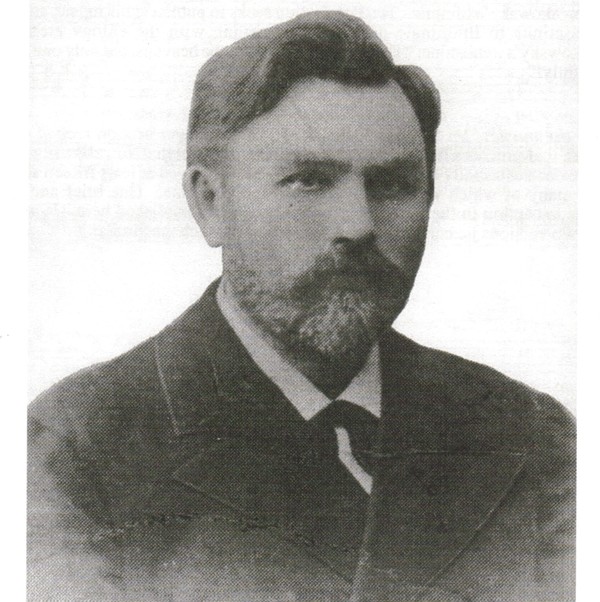David Nowakowsky
David Nowakowsky (Novakovski) (1848–1921) was born in the small town of Malin, near Kiev, Russia. At the age of eight he ran away from home to escape a proverbial wicked stepmother. He settled in Berditchev, where he studied music and served as a meshorer, choir-boy, in the synagogue. Then at the age of 21 he was invited to Odessa to serve at the Brody Synagogue as choirmaster and assistant, first to Cantor Nissan Blumenthal, and after 1891 to the great Cantor Pinchas Minkowski. More than other Russian cities, Odessa was cosmopolitan, open to the cultural influence of Western Europe. The Brody synagogue in Odessa became known as a modern house of worship, with a renowned choir, cantor and organist. Even many non-Jews would visit the synagogue just to enjoy the beauty of its music, including Peter Tchaikovsky, who praised Nowakowsky as a first-rate talent. His most important publication was Gebete und Gesange zum Eingang des Sabbath für Solo und Chor mit und ohne Orgelbegleitung, published in Leipzig in 1901.
Nowakowsky’s compositions went underground after his death in 1920. Literally. In 1924 boxes of his manuscripts were smuggled out of Soviet Russia and brought to Berlin. Within a few years the Nazis had come to power and the manuscripts had to be moved again, this time to France, where they were buried in a field by a sympathetic farmer. After the war, the composer’s grandson Alexandre was able to dig up the music and eventually brought the manuscripts to the United States.
Nowakowsky’s greatest work is his setting for choir and cantor and organ of verses from Psalm 115, Adonoy Zekhoronu, a work featuring many textural contrasts. Observe how in the first 10 measures, the organ uses the repeated rhythmic leitmotif building tension with the dominant of F-minor, the chorus thunders in majestically in the tonic with a three-octave unison, and then immediately morphs to supporting the tenor soloist with his calm melody in the relative major. (example 13) The concluding fugue, beautifully worked out, begins at measure 80. (example 14)
Listen to Nowakowsky’s Adonoy Zekhoronu: https://youtu.be/K-6gPDJ6qlk?t=3489 .
David Nowakowsky—original publications
Nowakowsky, David. Gebete und Gesänge zum Eingang des Sabbath : für Cantor Solo und Chor, mit und ohne Orgelbegleitung[Kabalat Shabat] Gebete und Gesänge zum Eingang des Sabbath; für Cantor Solo und Chor, mit und ohne Orgelbegleitung. Leipzig: C.G. Röder, 1901. Reprint edition, New York: Sacred Music Press, 1955.
https://www.youtube.com/watch?v=K-6gPDJ6qlk (Masterworks of Majesty)
Rubin, Emanuel. “The Music of David Nowakowsky (1848 -1921): A New Voice from Old Odessa.” Musica Judaica 16 (2001). 20–52.
